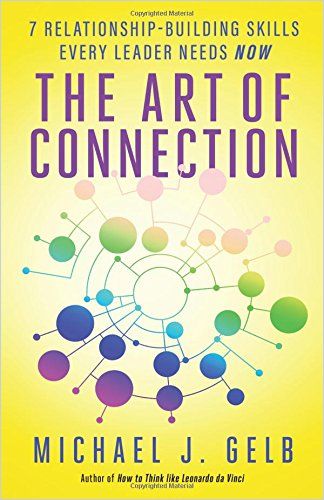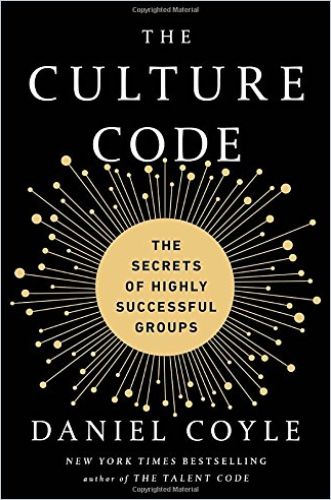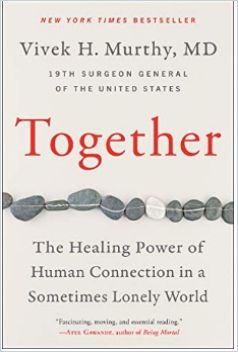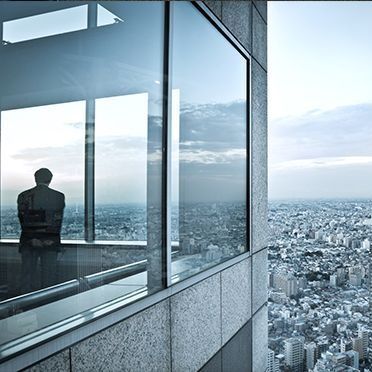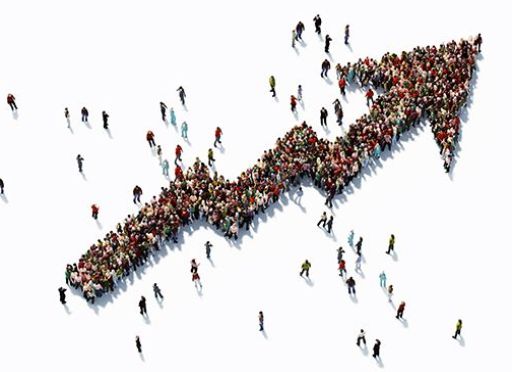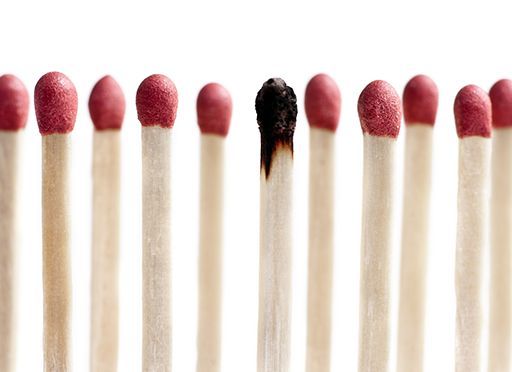“Your Level of Social Connection Affects Your Longevity”
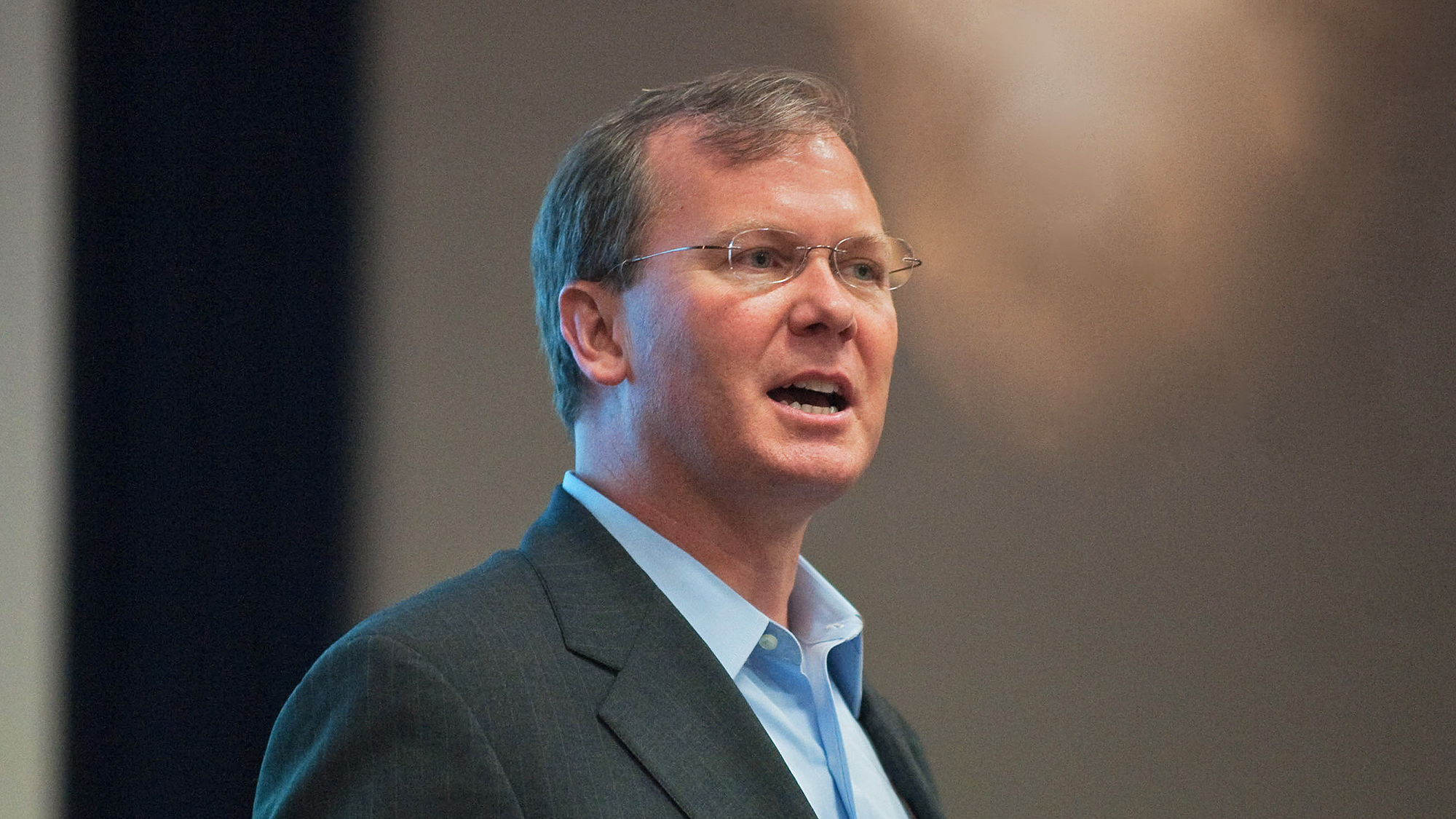
Mike, what prompted you to write a second, updated edition of Connection Culture?
Michael Lee Stallard: There have been breakthroughs in research in the last five years that underscore the importance of connection and the perils of disconnection in our personal lives, work lives and society. I want people to be equipped with knowledge that bolsters the case for connection, especially if they are trying to affect a positive culture shift in their group.
Can you give an example?
Take the issue of loneliness: Declining social connection in the United States grabbed attention worldwide in 2017 when Julianne Holt-Lunstad, a professor of psychology and neuroscience at Brigham Young University, presented data from two research studies that found that individuals with stronger social connections were associated with a 50% reduced risk of early death, whereas individuals who were lonely or socially isolated – that is, not around people – were associated with a risk of premature death equal to or greater than the risk of premature death from widely known risk factors including obesity and smoking up to 15 cigarettes per day. Put simply, your level of social connection affects your longevity, and lacking sufficient connection is a risk factor to take seriously. She declared that the United States and several nations around the world are facing an epidemic of loneliness. Cigna released study results in early 2020 showing that three in five American adults self-report as lonely, aligning with Dr. Holt-Lunstad’s assertion that loneliness is a pervasive issue.
Other research shows that greater loneliness in the workplace results in poorer task, team role and relational performance.
Michael Lee Stallard
In addition to updated and new research, the second edition incorporates more examples and practical tips for building cultures of connection as well as new material that encourages self-reflection and application. The contributing authors and I welcomed the opportunity to broaden the diversity of leaders profiled from business, government, health care, higher education, sports, media and entertainment, and the social sectors, drawing on leadership lessons from inspiring leaders. We provide, for example, a behind-the-scenes look at Lin-Manuel Miranda and the team that developed the successful award-winning Broadway musical Hamilton. Other new profiles include basketball superstar Steph Curry, media mogul Oprah Winfrey and Mayo Clinic.
Are there three very specific new take-aways that can be used in our so-called new normality?
As for take-aways, the first is the need to develop a “connection mind-set.” By that, I mean understand and embrace that human connection is a superpower that is essential for individuals and organizations to thrive for a sustained period of time and disconnection is a super-stressor that sabotages health and performance. Second, recognize that there are three types of relational cultures – cultures of control, cultures of indifference and cultures of connection – and you want to live and work in cultures of connection so that you will thrive and your group will achieve sustainable success. Third, understand that cultures of connection are created when leaders communicate an inspiring vision, value people and give them a voice, i.e., vision + value + voice = connection. It’s remarkable how often this combination of vision, value and voice exists in groups that achieve sustainable success. That said, it’s rare.
Expressed in numbers?
One global study by the Bain consultancy found only ten percent of organizations developed a winning culture and even those organizations had difficulty sustaining it. That sobering statistic tells me that leaders don’t have a clear understanding of what type of relational culture is best. It’s almost always the failure to sustain relationship excellence that corrodes the culture and sabotages performance.
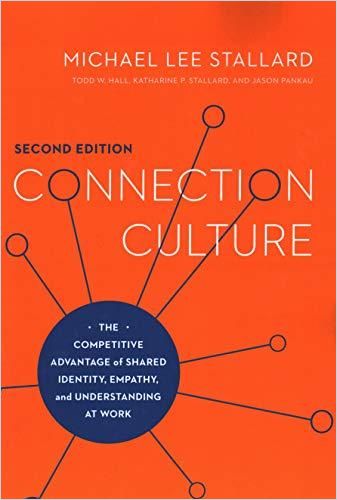
Connection Culture is one of our most-cited abstracts, and many people, as well as companies, found the first edition helped them find their way through this year. What exactly did you have to revise or put into a new context to make it make sense again in a “remote culture” where digital connection is rapidly enhanced, but physical connection is diminished?
The principles and framework around connection culture apply whether colleagues are working remotely or in the same location. We were in the later editing stages of the second edition when the COVID-19 pandemic spread worldwide and organizations had to quickly pivot to allow for remote work. Given that shift, we returned to the manuscript and made sure that we considered the impact of remote work throughout the book. It is especially prominent in the practical, implementation chapters and in sections on the evolving workplace. Fortunately, we’ve learned much from our own experiences with remote work, as our team has been spread out geographically and mostly working from our homes or on the road for many years. This edition of Connection Culture was written to be relevant during the pandemic and also post-pandemic, when we believe there will be a greater percentage of work done remotely than was being done pre-pandemic.
So, how can I, as a “newbie” remote worker, make sure that I do not lose my connections?
In Connection Culture I write about the late John Cacioppo’s framework on connectedness: intimate connectedness with a soulmate; relational connectedness with family and friends; and collective connectedness with intermediate associations – groups we are not related to by blood such as organizations, community groups, religious groups, sports groups, etc. I think this is a helpful framework to have in mind to answer your question. Now, to protect intimate connections, it’s important to take time off from work and disconnect with technology.
At a minimum, I recommend you set aside at least one meal a day and one entire day each week so you can be present with your soulmate.
Michael Lee Stallard
When your home is also your workplace, it’s easy to keep dipping back into work. I admit the pull to be on my smartphone looking at articles or checking emails is strong and it takes willpower to put it aside. I think we all know that connection is more than simply being in the same room with the other person. You need to be present mentally and emotionally too.
Any advice on how to protect relational connections?
To protect relational connections, be intentional about scheduling time in your calendar with people. For years, I have reserved three hours every Saturday morning to be with a group of my male friends, talking and supporting one another through life’s ups and downs. I also schedule regular telephone and video calls with family and friends. To protect collective connections, focus your involvement with just a few organizations so you don’t get stretched too thin.
What digital tools do you use and what helps you prioritize?
There are many digital tools that have come on the market of late. At this point, the primary tools I use personally are simple ones and include texting, email and video platforms. For business and professional connections, I focus on LinkedIn.
Has there been any significant change in your advice on establishing a connection culture in organizations? I mean, the building blocks to create and maintain it have remained structurally the same but cultures have to live and evolve together, and over long distances –from home office to home office – much of it is lost.
The Connection Culture Model hasn’t changed. However, with remote work on the rise, implementation has changed. Public health measures needed to reduce the transmission of the virus have meant we can’t connect with others in some of the ways we were used to and that has raised an awareness of our inherent need for connection.
Historically, we have the highest percentage of people living alone worldwide, with many of them having relied on social connection in-person at work to meet their hardwired need to connect.
Michael Lee Stallard
It’s not realistic to expect that those who are moving to do most of their work remotely will, going forward, be able to meet their need for connection through work. That means they will need to be intentional about developing and strengthening local connections with family, friends and community, something people who are accustomed to working remotely know. During the pandemic, local connections will need to be almost exclusively with people in their bubble of safety or through virtual means. When the pandemic ends, I believe we will still have a greater overall percentage of remote work versus pre-pandemic levels which means that local connections outside of work will become even more important than they were pre-pandemic.
Did you know?
Three in five American adults recently self-reported they’re suffering from loneliness. According to Michael Lee Stallard, there are four steps you must take to combat isolation:
- First, develop a “connection mind-set” – know that connection is a superpower, and disconnection is a super-stressor.
- Second, never worry alone; instead, to help you process and organize your thoughts, connect with trusted family, friends or colleagues who are encouraging listeners.
- Third, you can’t give what you don’t have. You will be a better connector if you are physically and emotionally healthy, so don’t neglect self-care.
- Fourth, helping others helps you too! It can shift your focus away from your worries, bring a sense of satisfaction for having done some good, and prompt feelings of gratitude for the blessings you have, however great or small. Biologically, scientists have found that when we help others, we experience a “helper’s high,” a term for how we feel after the release of endorphins, a “feel-good” chemical naturally made in our bodies that can boost our happiness and relieve pain. Heed the leadership philosophy of Frances Hesselbein (the remarkable leader who transformed the Girls Scouts of the United States into what management guru Peter Drucker once said was “the best-managed organization around”): “To serve is to live.”
Your book cites plenty of examples and scientific evidence for the importance of human connections. Is there an especially striking new example from the corporate world on how a company managed to establish or foster a remote connection culture in a unique and successful way?
There is a lot of buzz about organizations using new technology tools to foster remote connection cultures. I frequently receive emails from PR firms wanting me to write about their clients who’ve supposedly cracked the code on connecting with remote workers. I’m skeptical. It’s too early to say with confidence that these tools are working well and overcoming the challenge of physical separation. One data point to note is that Gallup research has seen a fairly large decline in employee engagement since the pandemic began.
What does the latest research tell us about the quality of bonds over long distances?
Fifteen years of research by Karen Sobel Lojeski and Richard Reilly has shown that as more people spend time interacting through digitally-mediated communication technology, the more isolated they feel.
The source of isolation, however, has little to do with distance and everything to do with factors that are related to human connection, including whether people feel their work matters and whether they feel connected to their supervisor, colleagues and the people they serve through their work.
Michael Lee Stallard
Drs. Sobel Lojeski and Reilly’s research findings, presented in their book, The Power of Virtual Distance, are consistent with what we have found in our work over nearly 20 years, i.e. the core principles of good leadership and culture are the same whether the context is in-person or virtual. Methods will differ slightly but the bottom line is that it all comes down to human connection.
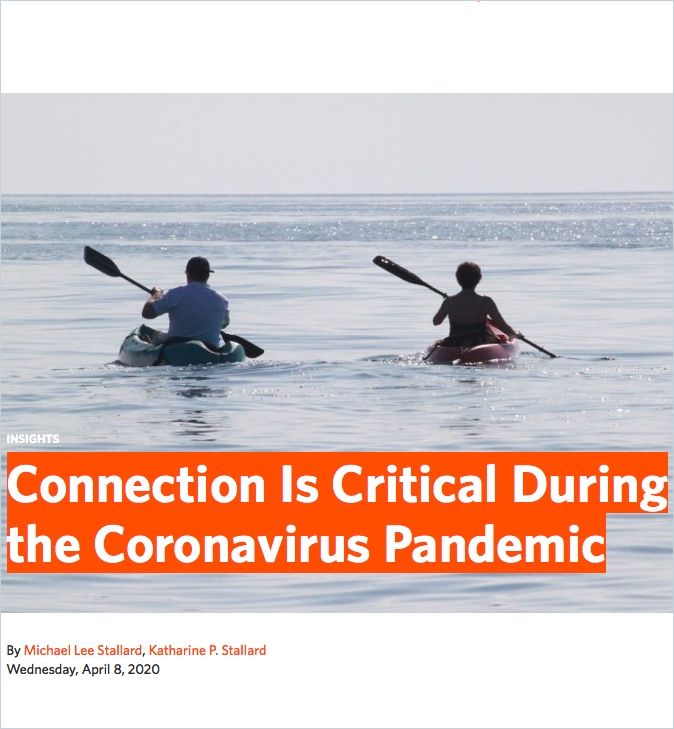
There is sometimes a certain overload of requests and contacts – precisely because the hurdles in the digital world have become lower. At what point do too many connections become distracting or even unhealthy?
Attending to the demands of too many connections can become overwhelming. If you are regularly feeling anxious and overwhelmed from these demands, it can harm your emotional and physical health, which happens when you are stuck in an ongoing state of stress response. A type of over-connection can come about when our human tendencies toward homophily and confirmation bias make us vulnerable to the seductions of media echo chambers that present only one point of view, often infused with heightened emotion. This can happen with certain broadcast media outlets. It also happens online. The Netflix documentary The Social Dilemma shows how certain online players employ algorithms that intentionally push more agreeable content to you, knowing that you are more likely to click on it. These players are ubiquitous online and many of them purposely use inflammatory rhetoric to demonize people and groups that have opposing points of view because it drives more clicks and that leads to higher advertising revenues. The result is that these divisive digital echo chambers boost polarization and social stress, which increases the likelihood of verbal and physical violence.
What can one do about that?
We can protect ourselves from these agents of division by engaging less with them. We should also seek to be more widely informed by intentionally seeking a diversity of opinion and calmly and patiently engaging with others who have different perspectives so we can try to understand their points of view. We can also be peacemakers to help bridge the growing divides. For example, in the U.S., groups such as Braver Angels and Living Room Conversations are bringing people with different points of view together in facilitated conversations that reduce political polarization. I also counsel people to find a trusted friend, colleague, mentor or coach who can help you develop a plan to address overloads.
Talk it out, don’t carry anxiety over your overflowing email inbox, for example, on your own.
Michael Lee Stallard
Here’s why: Having conversations about the issues will help quieten the portion of your brain called the amygdala, which processes threats and engages the prefrontal cortex of your brain where you process logic and speech. This step will help you feel better and make better decisions about how to manage your network.
It’s an interesting factor in the current pandemic that those who have a spouse or a family and are now working from home are often forced to spend more time with their loved ones again. There are said to be couples who talked to each other during the lockdowns in spring for the first time in years! Jokes aside: Some are happy about these deepened relationships; others fail because of it – they constantly argue or even divorce. How do you find the balance here?
No doubt, the pandemic is stress testing relationships in the home. Parents who are now working from home and needing to supervise their children who are now attending school remotely have been shown to have very high levels of stress. People of color and caregivers of the elderly also report very high stress. Relationships that were already strained are really feeling it. I am very concerned for individuals who may be experiencing domestic abuse because of the changes brought on or exacerbated by the pandemic. On the positive side, a piece in The New York Times in October 2020 on CEOs working at home and thus having dinner with their families stated that research shows the value of having regular family meals together. It mentioned these benefits: “Children who eat with their parents have bigger vocabularies, receive higher grades and have lower rates of obesity.” Identifying how to make day-to-day living work when your home is also your office and your child’s classroom can be challenging but it’s necessary. It’s important to talk through and consider each individual’s needs, responsibilities, stressors and the activities they rely on to refresh them and boost their resilience. And keep talking and adjusting as time goes on.
And if that does not help?
If tension in a relationship at home is bothering you, my advice is to seek help from a counselor who practices Emotionally Focused Therapy, frequently referred to as “EFT,” which is all about connection. An EFT counselor can help you understand each other better and sort out navigating how to make spending so much time at home together less problematic.
Any more personal advice from your private life?
Well, when my wife, Katie, started working full time with me a few years ago, I had an unspoken expectation of what our workday would look like and we eventually had to talk about it. I like to go to bed by 10:30 p.m., get up early in the morning and start working, and take long walks outside during the day, when my schedule permits. Katie likes to stay up later, often past midnight, whether she’s returning to a work project in the quiet of the household or getting caught up in something she’s reading. She sings in a women’s a cappella group that rehearses on a weekday morning and, as I mentioned earlier, I meet every Saturday morning with my group of male friends. We came to accept that the work is going to get accomplished, even if our “office hours” aren’t completely aligned. I’ve adjusted to having several things crossed off my to-do list before she has started her first cup of coffee in the morning, and one item just might be reviewing the draft she edited while I was sound asleep. We know these things about each other and fully support them because we know they help us be at our best by meeting our unique needs for connection and boosting our resilience.
What role does the now more necessary balancing of personal and business relationships play in the new everyday life?
Pre-pandemic, leaders who resisted the move toward allowing more remote work often did so out of a concern that productivity would drop, when, in fact, productivity went up after the pandemic began. It could be that some employees felt they needed to show they were responsive and up to the task, possibly out of worry that they might lose their job if their organization needed to downsize during this uncertain period. Working at home can make it hard to maintain balance so there is an increased risk of burnout. Presently, we are seeing burnout rise.
Any insights you can share when it comes to prevention?
My advice is to take at least one “work-free” day off each week.
Ideally, while stress is so high during the pandemic, take most of each weekend off. Work on one task at a time and avoid multitasking. Make meals social. Play board games or card games, do a puzzle, bake, draw or paint.
Michael Lee Stallard
Look for ways to serve and help others – this produces positive emotions that have been referred to as “helper’s high.” Check on family, friends and the elderly, whether it’s through a phone call or meeting up on FaceTime or a platform such as Zoom. Send handwritten notes and cards. Get outside and appreciate nature. Take time for meditation or prayer. Regularly write down three things you are grateful for, even small things like the taste of chocolate, the sound of a child’s giggle or the convenience of having running water in your home. Each of these actions boosts positive emotions that will make you more resilient and protect you from burnout.
Let us stay with this optimistic tone: New in the second edition of Connection Culture is a look into a possible coming, anthropomorphic age that may be ushered by the current pandemic with “more connections leading to greater creativity, productivity, and well-being…”
Like it or not, we humans tend to learn more from going through times of adversity and it motivates us to make changes! I’m optimistic that, coming out of the pandemic, more people – including leaders – will be appreciative of the human need for connection and the perils of disconnection.
But currently, we are more likely to see headlines about lonely people who have plenty of contacts but are overwhelmed by the fact that so many are virtual, and no longer physical, interactions. What makes you optimistic about this upcoming anthropomorphic age?
I’ve been writing about the need for connection cultures since before my first book, Fired Up or Burned Out, came out in 2007. Edward Hallowell of Harvard Medical School and Jane Dutton of the University of Michigan Ross School of Business were writing about connection in the context of organizational cultures before I was. And in recent years, I have seen an uptick in the number of books on related topics, including The Art of Connection, Back to Human, Lost Connections, The Connector’s Advantage, The Crisis of Connection, The Culture Code, and Together, to name just a few. There are also artistic productions such as the song Connection by OneRepublic, the Broadway show Dear Evan Hansen about a teenager with social anxiety who desperately yearns for connection, and the Netflix series Maniac with Emma Stone and Jonah Hill which is about a future world that’s falling apart from loneliness and disconnection.
Because this global pandemic has had such a profound impact on our personal lives and work lives, it has certainly brought focused attention to stress, loneliness and the effects of social isolation.
Michael Lee Stallard
If I am correct that more individuals and organizations will tap into the power of human connection in the future, it follows from the science that, other things being equal, greater engagement, creativity, productivity, innovation, wellness, well-being and a rising standard of living will result. I think when you learn the science of connection and read about leaders who are getting it right you can’t help but feel better and more optimistic about the future. Of course, each of us has a role to play in bringing about this brighter future. That’s why I often use the word “cultivate” when talking about connection cultures – drawing to mind agriculture and maintaining conditions required for healthy biological growth. Like a gardener who works to cultivate the conditions that produce a beautiful garden, we need to tend to the relational cultures we live and work in.
About the Author
Michael Lee Stallard is a keynote speaker, trainer, executive coach and consultant on building connections at work. He’s the author of Connection Culture, one of the most cited abstracts of the year in getAbstract’s library.

